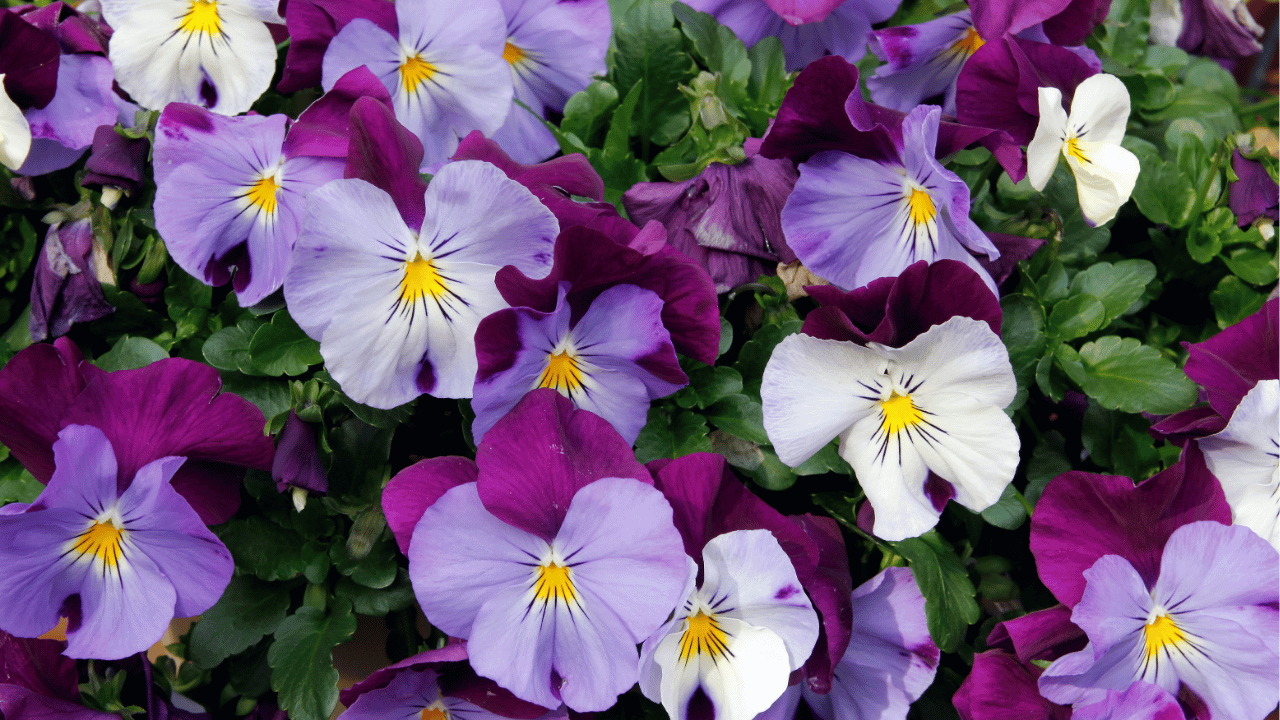Caring for pansies can be both enjoyable and rewarding, offering bursts of vibrant color to your garden all season long. These resilient flowers thrive in cooler weather but still require attention to flourish. By following specific, well-timed care routines, you can ensure that your pansies bloom beautifully and stay healthy throughout their growing cycle. Let’s dive into 10 essential tips that will help you nurture your pansies effectively.
1. Plant in Cool Weather
Pansies prefer cooler temperatures, so it’s best to plant them in early spring or fall. The ideal temperature range is between 45°F and 65°F. By avoiding the heat of summer, you’ll protect them from wilting and stress, allowing them to thrive.
If you live in a warmer climate, make sure to choose a location with afternoon shade. This will help keep the soil cool and prolong the bloom season, ensuring your pansies stay vibrant longer.
2. Choose Well-Drained Soil
Pansies don’t tolerate waterlogged soil, so ensure their bed has good drainage. Adding organic matter like compost improves both the soil structure and moisture retention without risking root rot.
To boost soil health further, consider a soil pH between 6.0 and 6.2. Regularly checking pH levels can make a noticeable difference in the longevity and vitality of your plants.
3. Water Consistently But Don’t Overwater
Pansies need consistently moist soil, but overwatering can lead to root rot. Water them thoroughly once or twice a week, making sure the top inch of soil remains moist.
During periods of dry weather, check the soil more frequently. If it feels dry an inch below the surface, water your pansies deeply, ensuring they receive moisture at the root level.
4. Use Mulch to Retain Moisture
Applying a layer of organic mulch around your pansies helps retain moisture, keeping the soil cool and reducing the need for frequent watering. Mulch also suppresses weed growth, which can compete for nutrients and water.
Make sure the mulch doesn’t touch the stems directly to avoid stem rot. An inch of space between the mulch and plant base will give the plants breathing room while still conserving moisture.
5. Fertilize Regularly
Pansies benefit from regular feeding, especially during their active growth periods. Use a balanced, water-soluble fertilizer every two weeks for optimal blooms and healthy foliage.
However, avoid over-fertilizing, as this can lead to excessive leafy growth and fewer flowers. Stick to the recommended dosage and reduce feeding in extremely hot weather to prevent stressing the plants.
6. Deadhead Faded Flowers
Regularly remove faded or spent flowers to encourage new growth and continuous blooming. Deadheading prevents the plant from putting energy into seed production and redirects it towards more flowers.
Cutting spent blooms just above the next set of leaves also keeps your pansies looking tidy and neat, which enhances their appearance in garden beds or containers.
7. Prune for Compact Growth
If your pansies start to become leggy, prune them back to encourage a bushier and more compact growth habit. Trimming the stems by about one-third can stimulate new shoots and promote fuller plants.
Regular pruning also helps improve airflow between the plants, which can reduce the risk of fungal diseases that thrive in damp, overcrowded conditions.
8. Protect from Pests
While pansies are relatively pest-resistant, they can still attract aphids, slugs, and snails. Regularly inspect your plants and remove pests by hand or use organic insecticidal soap for aphid control.
For slugs and snails, setting up barriers like crushed eggshells or using non-toxic slug repellents can be an effective method to protect your plants without harming beneficial insects.
9. Rotate Planting Locations
To avoid soil-borne diseases and nutrient depletion, rotate your pansies to different spots in your garden each year. This prevents the buildup of pathogens that can damage your plants.
If you grow pansies in containers, be sure to refresh the potting mix each season to maintain nutrient levels and prevent the spread of pests or diseases from previous crops.
10. Provide Winter Protection
In colder climates, pansies can survive light frost, but prolonged freezing temperatures may harm them. Apply a layer of mulch before the first frost to insulate the roots and extend their blooming season.
If extreme cold is expected, consider covering your pansies with frost cloths or moving container-grown pansies indoors until temperatures rise. This ensures their survival and allows you to enjoy their blooms early in the next season.

